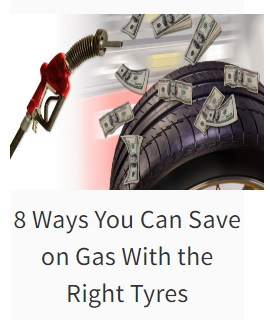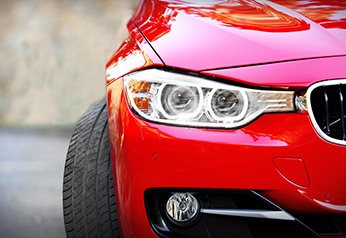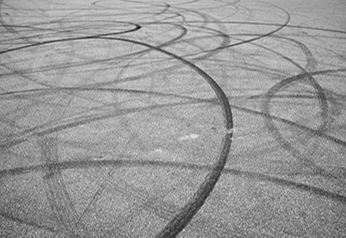
May 26, 2023
Tyre Pressure Guide
When checking the air in your tyres, it doesn't matter if you use an automated tyre pressure monitoring system (TPMS) or a manual tyre pressure gauge.
The most important thing is that you regularly monitor your tyre pressure. If you don't, you're in for a host of unpleasant surprises, such as unresponsive steering, more fuel consumption (and spending), a flat tyre, or worse, an accident due to a blowout.
To avoid these, Tyroola walks you through the techniques and benefits of proper tyre inflation to keep your drives safe and comfortable.
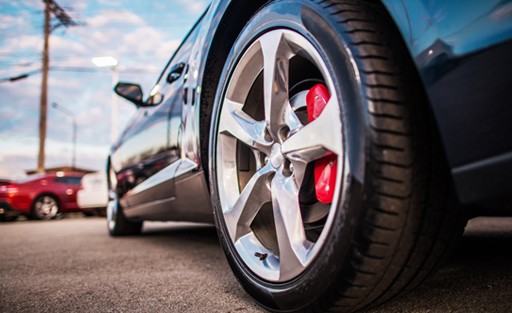
What Is Tyre Pressure?
Tyre pressure is the amount of air in your tyres.
Each vehicle has a recommended air pressure per tyre. It's the air that lets your tyres do the following:
-
carry the weight of your vehicle
-
brake, accelerate, and turn according to your commands
-
grip the road
-
roll on various surfaces
The bigger the vehicle—such as caravans, trucks and commercial vans—the bigger the tyres, which contain more air. With a higher inflation pressure, tyres can carry or tow heavier loads.
What Is the Right PSI for My Vehicle?
Tyre pressure is measured through PSI or pounds per square inch. Car tyre pressure usually ranges from 30 to 35 psi. This value increases with vehicle size. You can find your vehicle's recommended tyre pressure on:
-
Your owner's manual
-
Your car's tyre placard
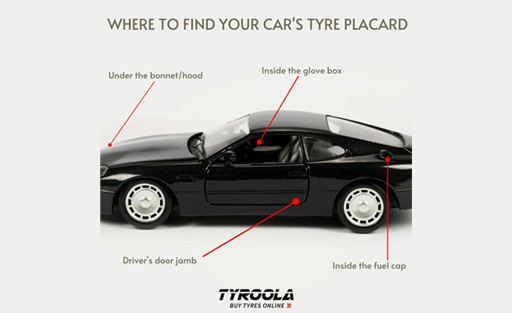
Remember:
⚠️ Don't follow the inflation pressure engraved on your tyre's sidewall. That figure indicates your tyre's maximum pressure, not the recommended pressure.
Remember:
⚠️ The recommended pressure stated in your manual or tyre placard is for a cold tyre. For a more accurate air pressure reading, check your tyres in the morning when they're cold. Avoid using a tyre checker after driving or when your vehicle is lounging under the sun. When your tyre is hot, air pressure momentarily increases, giving you an inaccurate reading. Wait for your tyres to cool down before checking their air pressure.
Remember:
⚠️ Some vehicles have different recommended psi for front and rear tyres so make sure you check.
How Do I Check Tyre Pressure?
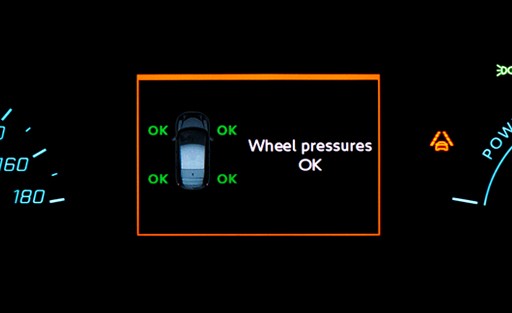
Using the TPMS
TPMS comes standard for most newer model cars manufactured 2012 onwards.
You can see the TPMS as a digital display on your dashboard.
There are two types of TPMS:
1. Direct TPMS
It works with a sensor fitted to the wheel, which measures the tyre's air pressure. When the air decreases 25% less than the recommended value, the sensor triggers a warning light on your dashboard.
2. Indirect TPMS
This type uses sensors that measure wheel speed. When your wheel turns slower due to low air pressure, the sensor causes your dashboard display to light up.
Your vehicle is required to have TPMS if it uses run-flat tyres.
Remember:
⚠️ Check your tyre pressure regularly even if you have a TPMS.
⚠️ Don't wait for the TPMS display to light up before checking your tyres. Digital malfunctions may delay the warning light. Also, TPMS cannot sense overinflation and gradual air loss. Some TPMS don't specify which tyre is losing air.
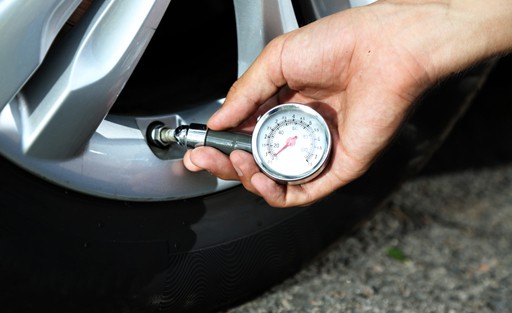
Using a Tyre Pressure Gauge
Tyre pressure or Air gauges can be digital, a stick-type, or with an analogue dial.
To check air pressure, follow these steps:
-
Remove the valve cap and centre the gauge over the valve stem.
-
Press hard until the hissing sound stops.
-
Check the reading on the gauge display. Note the pressure in each tyre.
-
Use an air compressor to fill the tyres with the recommended pressure. You can buy small in-car compressors or use the one in your nearest petrol station.
Remember:
⚠️ If you're inflating a heated tyre, add 3 to 4 psi more than the recommended value.
When your tyres have cooled down, recheck the pressure to ensure it's correct.
Remember:
⚠️ After inflating the tyre, use the air gauge to recheck the pressure.
If you've overinflated, push the gauge harder on the valve stem to release excess air.
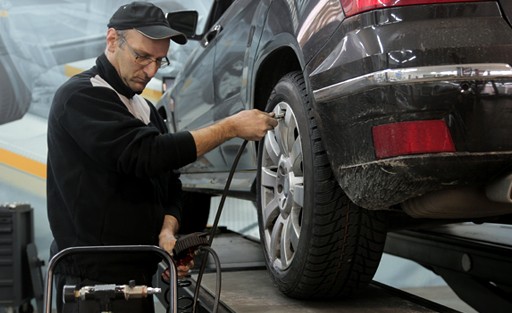
Why Do I Have to Check Tyre Pressure Regularly?
A tyre typically loses one psi every month because air will always push through the super tiny spaces in your tyre's rubber. Imagine leaving your tyres unchecked for months; they will only lose more air over time!
Remember:
⚠️ Check your tyre pressure at least once a month or before taking a trip.
But if you can, monitor your tyres weekly. You can also schedule regular tyre air top-ups every time you fill your petrol tank.
What are the Factors That Affect Tyre Pressure?
Even if you maintain your tyres, they will inevitably lose air because of:
-
Temperature Changes
Like all other gases, the air inside your tyres expands when heated and contracts when cooled. During cold weather, your tyre pressure drops, so make frequent tyre checks. Meanwhile, the hot summer months cause a temporary rise in tyre pressure.
-
Punctures
Punctures are caused by sharp objects, causing slow or rapid deflation. A slow puncture may result from an embedded foreign object, which gradually lets out air. However, a rapid puncture immediately affects your vehicle's handling. Tyre punctures can be repaired depending on the damage's nature.
-
Wear
With regular use, even the toughest tyres become worn. For every kilometre, your tyre rolls about 1,200 times. Constant friction with the ground eats into your tread and loosens its bound rubber strands, resulting in air loss.
What are the Benefits of Correct Tyre Pressure?
Proper inflation keeps you safe from accidents and maximises tyre performance, which, in turn, boosts vehicle performance. Other benefits include:
• More Fuel Economy
Manufacturers set the recommended tyre pressure as the psi to give you the best mileage. If you go below that, your tyres make more contact with the ground, which adds to their rolling resistance—the forces that keep your tyre from spinning on a surface. With a higher rolling resistance, your engine uses more fuel to mobilise your tyres.
• Longer Tyre Life
With the right amount of air, your tyre sidewalls don't have to flex as much when it makes contact with the road—and we all know that increased friction reduces tyre life. The correct tyre pressure also avoids excessive heat buildup, which may damage your tyre's internal structure, resulting in a blowout.
• Protection Against Hydroplaning
Hydroplaning happens when your tyres skid on a wet surface, making you lose control over your vehicle. Underinflated tyres put less pressure on the road, easily letting a film of water go between the tyre and the road, boosting your risk of hydroplaning.
• Increased Ride Comfort
Much has been said about underinflated tyres, but overinflated tyres may also cause issues. These include a harsher, bouncier ride due to tyre stiffness. Too much air pressure can cause premature tyre wear since rigid tyres can't handle road bumps or potholes well.
Remember:
⚠️ Monitor your tyre pressure to optimise fuel efficiency and safety.
Find Tyres for Your Car
You don't need to leave your home to buy new tyres! Tyroola offers a quick and easy way to select the best tyres for your vehicle. Just input your tyre size or rego in our tyre configurator to unlock our wide range of premium, value, and budget tyres.
Shop at Tyroola now! We also offer regular tyre deals that guarantee savings and the lowest prices online.

